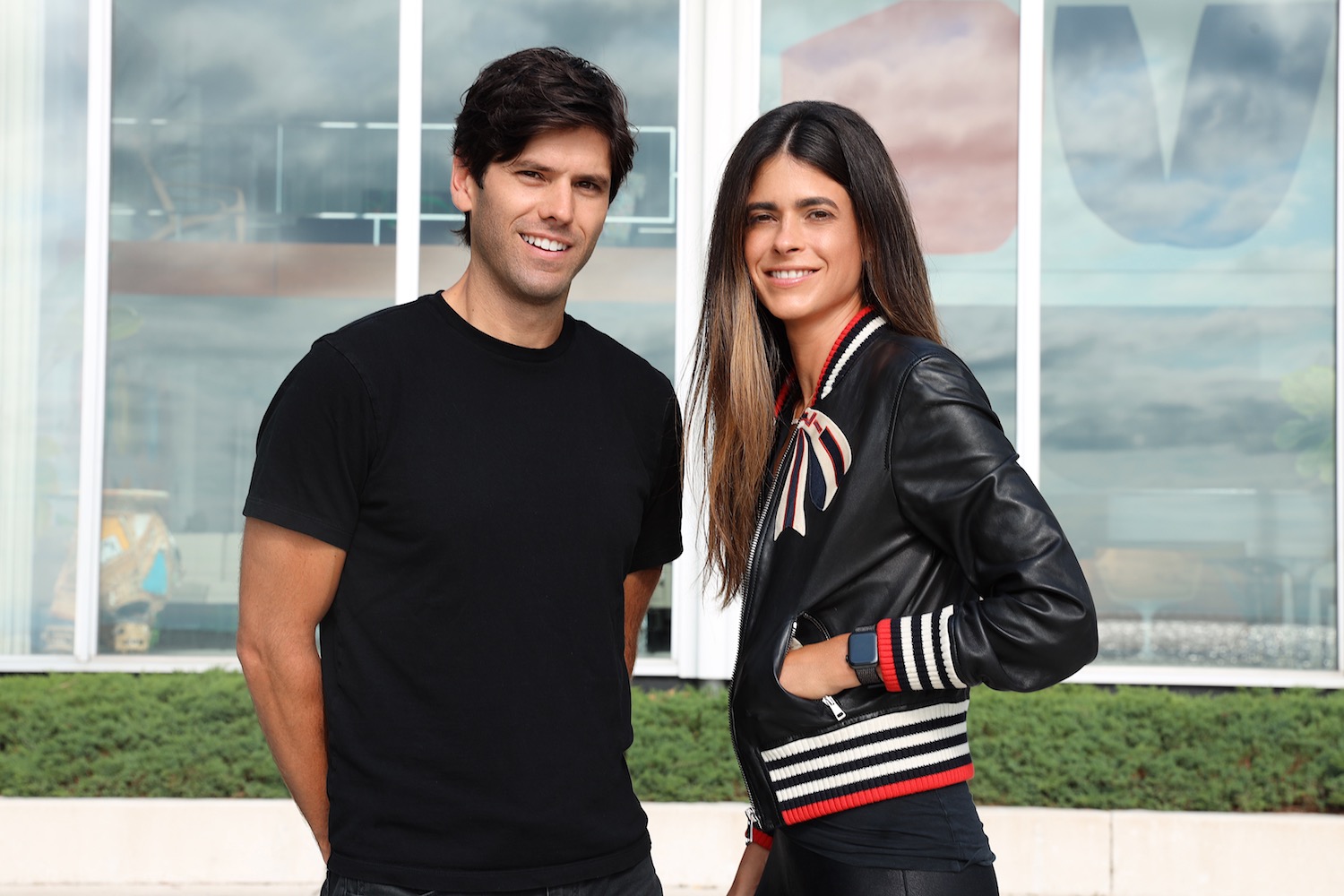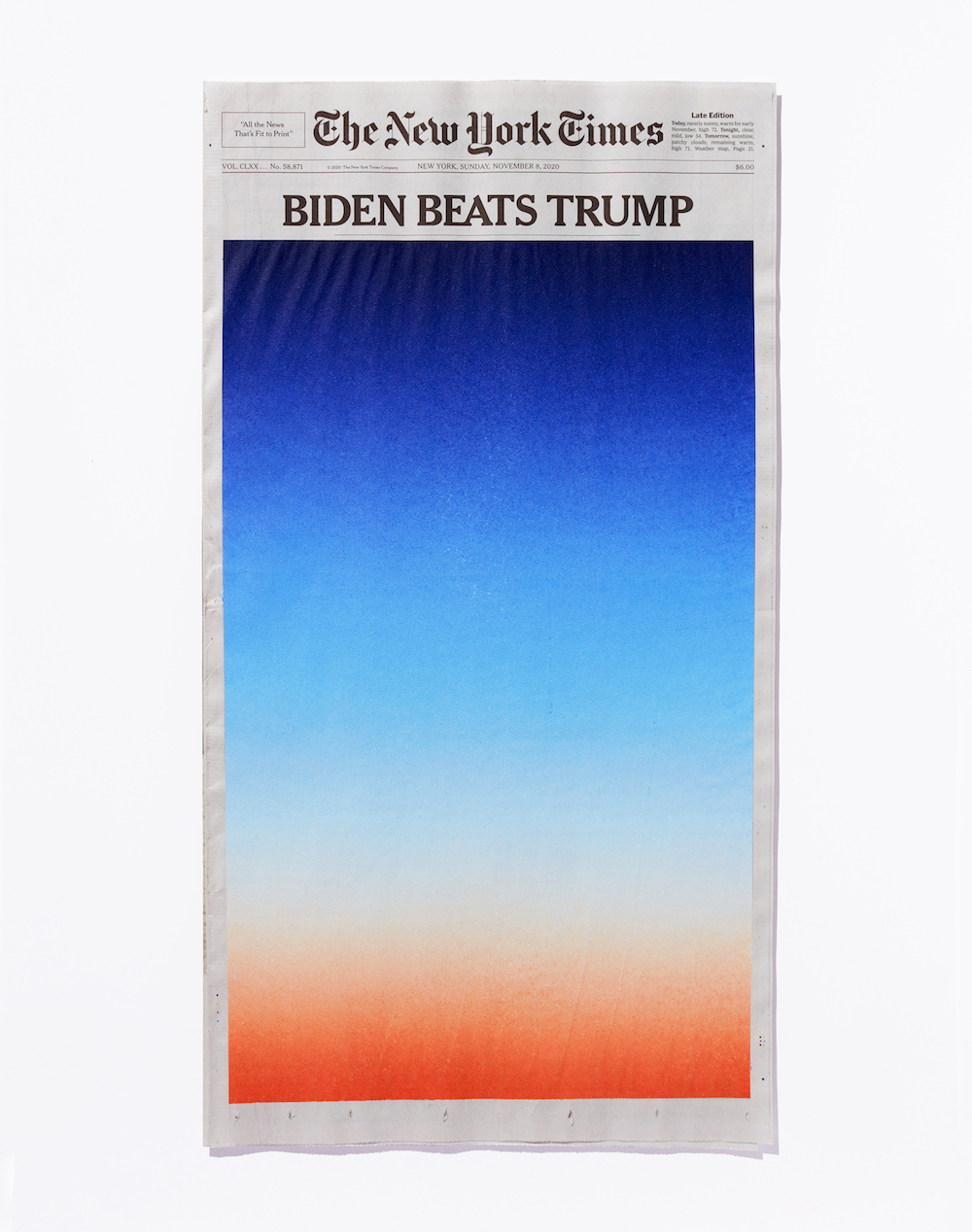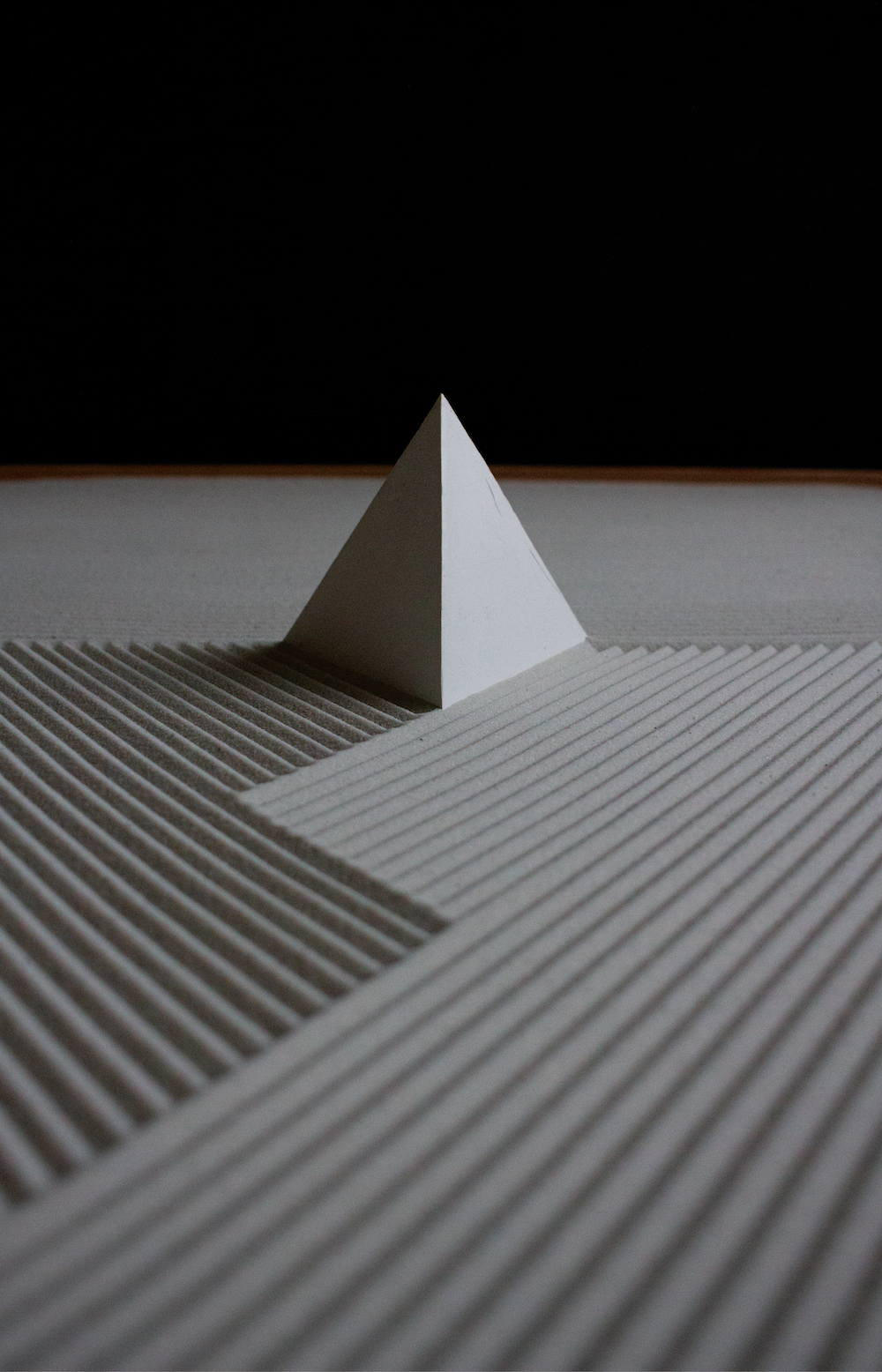JJ and Anthony Curis represent a cultural approach to Detroit’s art scene that goes beyond gallery walls. Their gallery Library Street Collective anchors the downtown art scene with exhibitions and public programs, guided by a community-driven message that employs art to reimagine the city. With a sister space and store, Louis Buhl & Co., the husband and wife are also behind the inspiring transformation of the public art destination now known as The Belt, featuring works by artists like Nina Chanel Abney, Jammie Holmes, Conrad Egyir, Rosson Crow, Ellen Rutt, and Shepard Fairey.
A new Snarkitecture-designed Library Street Collective, located in the century-old L.B. King and Company Building next door to the gallery’s previous space, opened early this year with “Light” by Sam Friedman, curated by KAWS. Whitewall spoke with JJ and Anthony about the inaugural show, digital programming, and their growing personal collection.
WHITEWALL: Your first collaboration with Snarkitecture dates back to “The Beach Detroit.” What was your design process like this time, working with them to execute art within architecture?
ANTHONY CURIS: Snarkitecture has designed a beautiful new space that transforms the alley-facing portion of the main level of the building and yet honors its original brick facade and cavernous ceilings to create something contemporary in a historical space. The new portal is both an architectural intervention as well as an art installation, connecting the gallery to the public art program in The Belt alley.
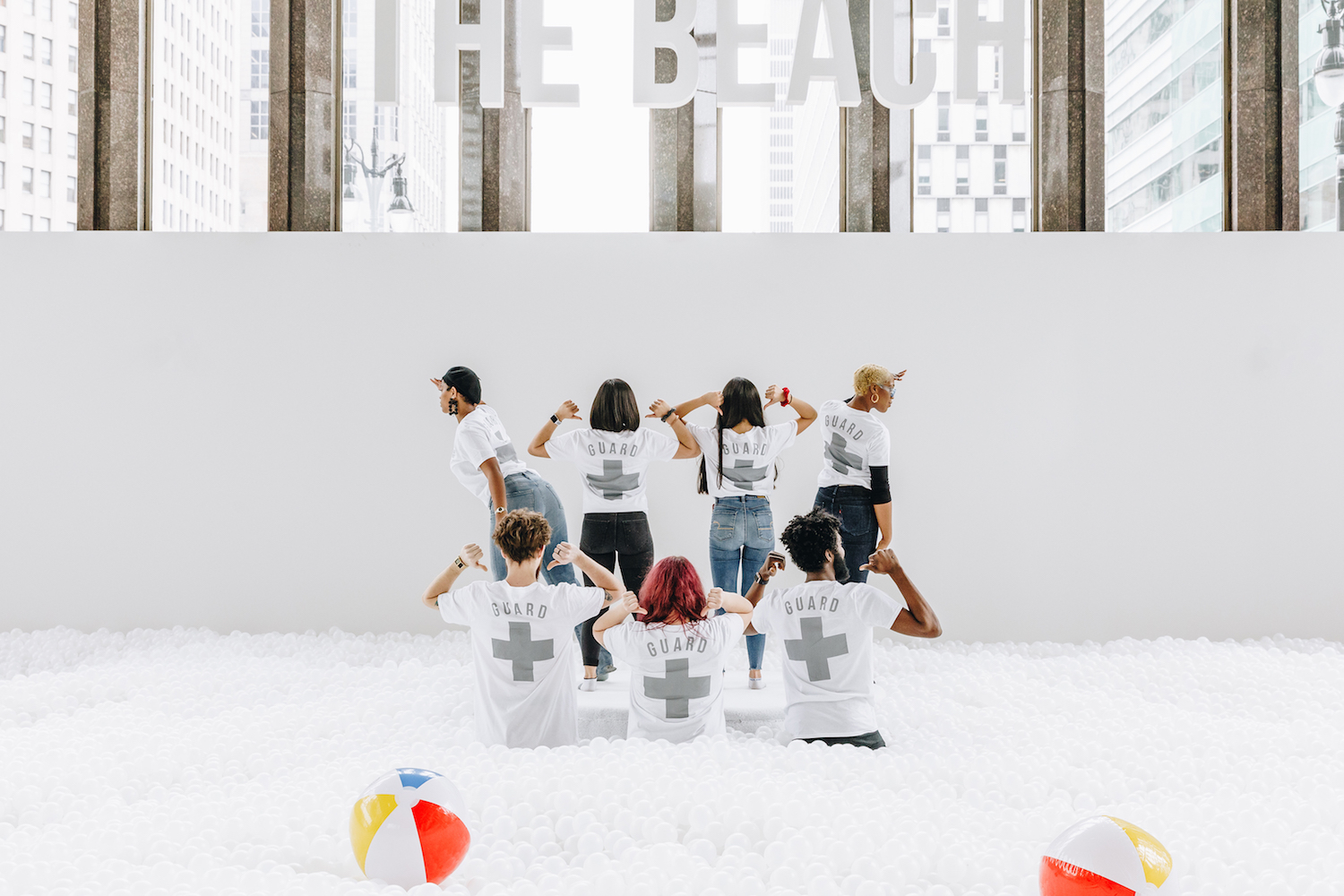
JJ and Anthony Curis, “Snarkitecture’s The Beach Detroit,” 2018-2019, photo by Hayden Stinebaugh, courtesy of Snarkitecture and Library Street Collective.
WW: “Light” (February 27–April 3, 2021) features works by Sam Friedman and is curated by KAWS. Can you tell us about the show?
JJ CURIS: Sam Friedman and KAWS have known each other since Sam graduated from Pratt in 2006 and started working in KAWS’s studio soon after. The two have kept a close friendship, and they are excited to be working together in this capacity. The series of works are abstract paintings that draw from Friedman’s interpretation of our presence of mind within nature. We are excited that this is the inaugural exhibition in our new space as Sam was one of the first artists to exhibit at Library Street Collective many years ago.

Sam Friedman, “Untitled,” 2020, Acrylic on canvas, 36 inch diameter courtesy of the artist and Library Street Collective.
WW: An ongoing priority for The Belt is ensuring artists have a space to create and engage with the public in Detroit. How do you safeguard this?
AC: We’ve focused a lot of our attention on the intersection of art and human interaction, which has manifested projects like Doug Aitken’s Mirage Detroit, an interactive roller-skating rink called Rainbow City Roller Rink with FriendsWithYou, and a public skate park entitled Wayfinding with skateboarding legend Tony Hawk and artist Ryan McGinness.
Since 2016, we have been slowly working on a project to recreate 14 historic murals from the 1970s that were mostly destroyed over previous decades. In 2017 we installed a mural entitled Unity by Charles McGee, one of the artists originally involved in that historic project. At 96 years old, Charles embodies the soul of the Detroit art scene over the last century. He’s an icon for our city, and yet so humble at the same time.
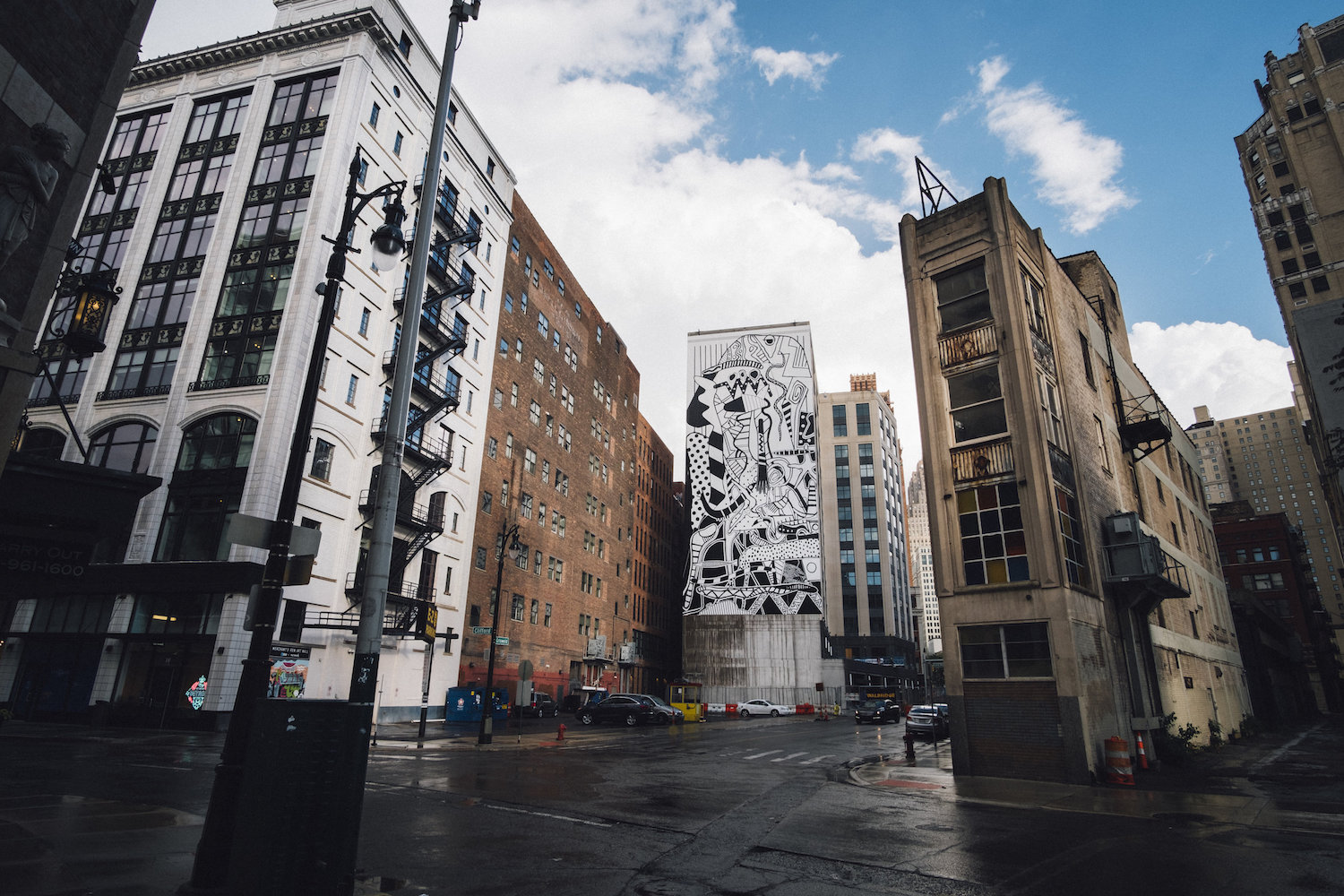
Charles McGee, “Unity,” 118-foot-by-50-foot mural, photo by Sal Rodriguez. courtesy of the artist and Library Street Collective.
And Jammie Holmes was the focus of our most recent presentation, “Public Matter,” a rotating exhibition of large-scale works. Beyond the galleries, The Belt is home to other ventures such as bars and restaurants like Deluxx Fluxx, Standby, and The Skip, making it one of the most vibrant public spaces in Detroit.
WW: How did Library Street Collective switch gears and get online, helping those in need during the start of the pandemic?
JJ: When the pandemic forced us to close our doors, we shifted our focus to supporting those most affected in our community. We launched a coloring book, We All Rise, featuring unique sketches from 29 artists. All proceeds were donated to provide meals for Detroit Public Schools students and their families who no longer had access to school lunch programs.
We also partnered with Carrie Mae Weems on “Resist Covid, Take 6,” an artist-driven public art campaign focused on enlightening Black, Brown, and Native American communities on the potential impacts of the virus in their daily lives. Similarly, our Alliance charitable platform was launched to empower our artist community, raising funds for nonprofits and organizations in need, like the Empowerment Plan, Black Lives Matter, the NAACP, and NYC Together.
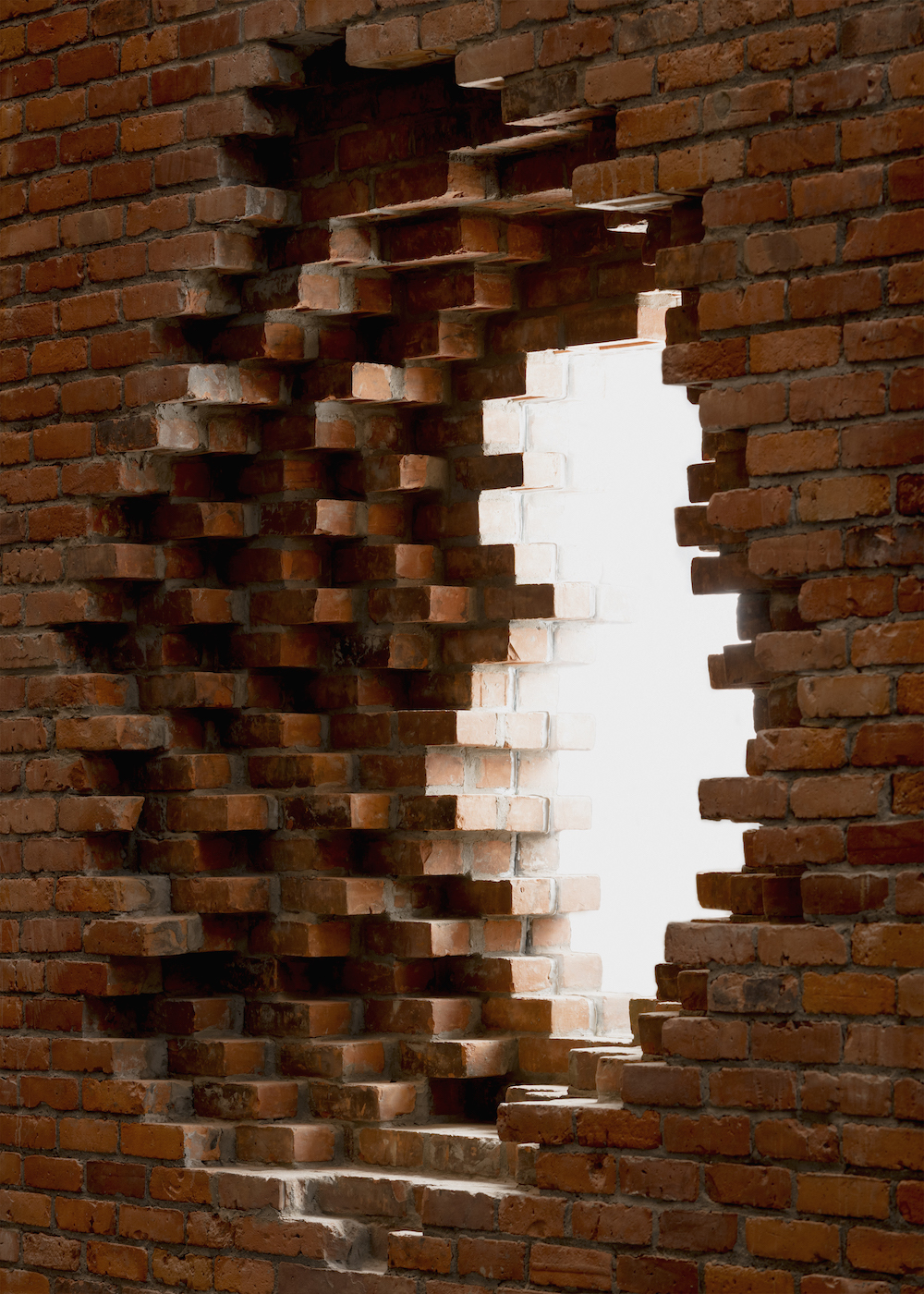
Snarkitecture’s portal at Library Street Collective, photo by Lyndon French, courtesy of Library Street Collective.
WW: How did the inability to physically show works impact new strategies online?
AC: We launched digital projects, such as “SITE,” a virtual exhibition platform inside some of Detroit’s most significant architectural buildings. It’s been fun to share the opportunity to step into these amazing spaces, and to visualize what it would be like to present artists’ works—from paintings to massive sculptures—in these significant and historic sites.
We also launched “Anatomy,” an in-depth virtual exploration of an artist’s background and studio practice. The next “Anatomy” presentation will feature work by the most recent artist to join the gallery, Natalie Wadlington—a graduate of Cranbrook Academy of Art’s MFA program whose work explores the complexity of interpersonal relationships through allegories of interactions with animals and the natural world.
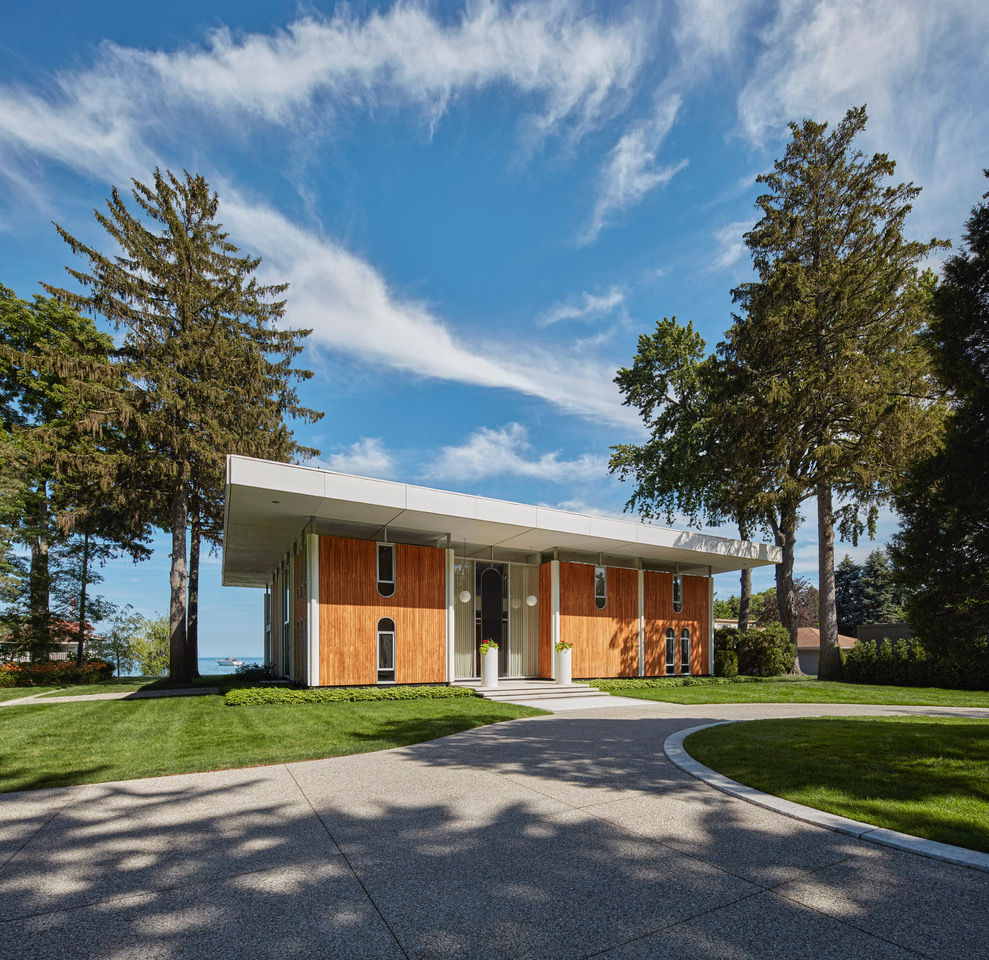
The W. Hawkins Ferry House pictured in Grosse Pointe Shores, photo by James Haefner, courtesy of Library Street Collective.
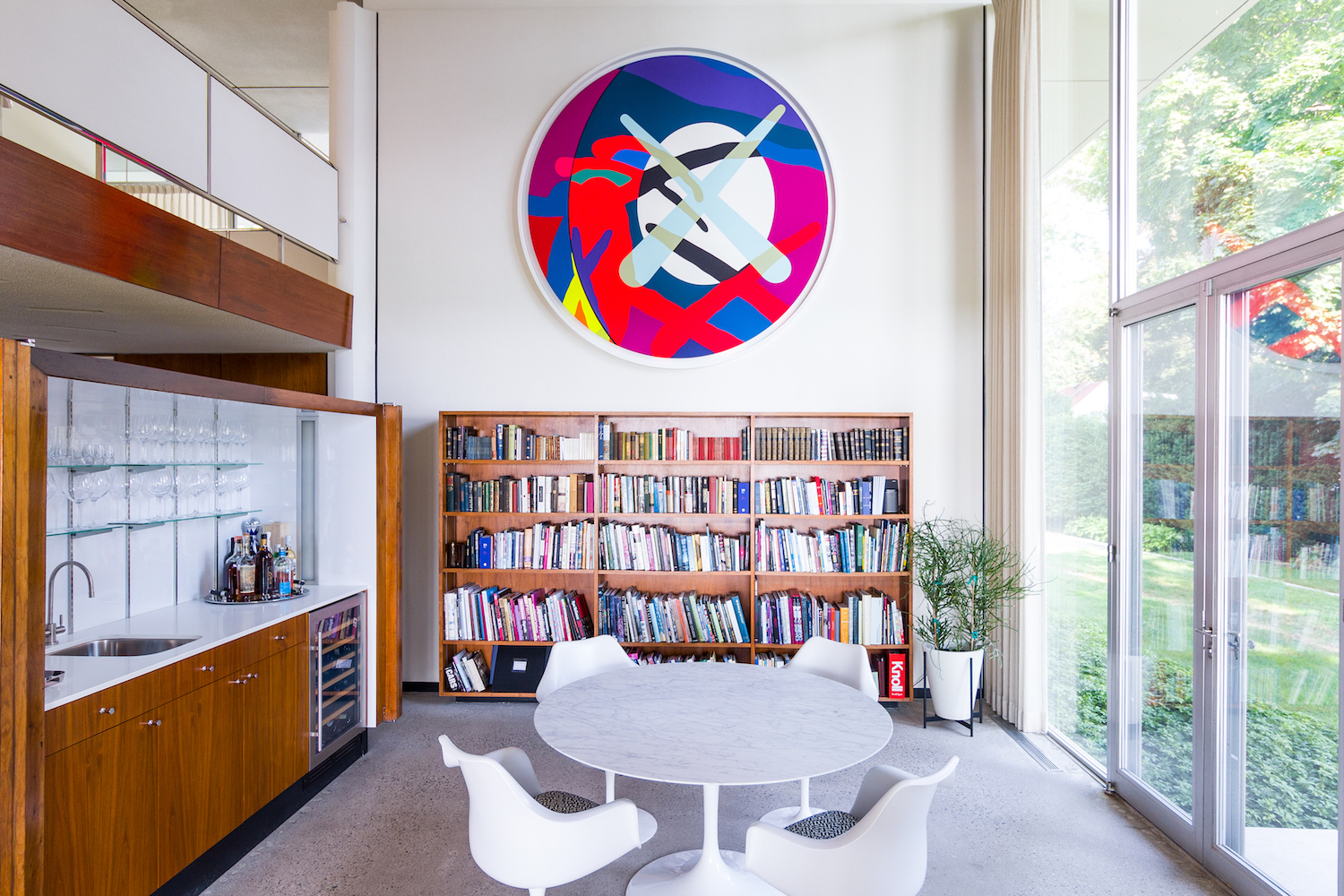
A large-scale tondo by KAWS’ hung above the bookcase, photo by Alessandra Ferrara, courtesy of Library Street Collective.
WW: Inside your midcentury modern home—the W. Hawkins Ferry House, now on the National Registry of Historic Places—is your contemporary art collection. How are you leveraging its prominence to benefit the community?
JJ: Hawkins, a major arts philanthropist and collector, commissioned celebrated architect William Kessler to design the residence to highlight his impressive art collection. We were fortunate to acquire the home a few years ago and immediately began the restoration process to honor its architectural integrity.
Hawkins left us with big shoes to fill, so we’ve tried to use the home to benefit others as well. Over the past few years, we’ve hosted exhibitions and gatherings to support of a number of Detroit-based nonprofits and organizations. Most recently, we presented “Virtual Window” by Jonathan Chapline, who created a new series inspired by the house’s architecture, also referencing works from Hawkins’s esteemed art collection.
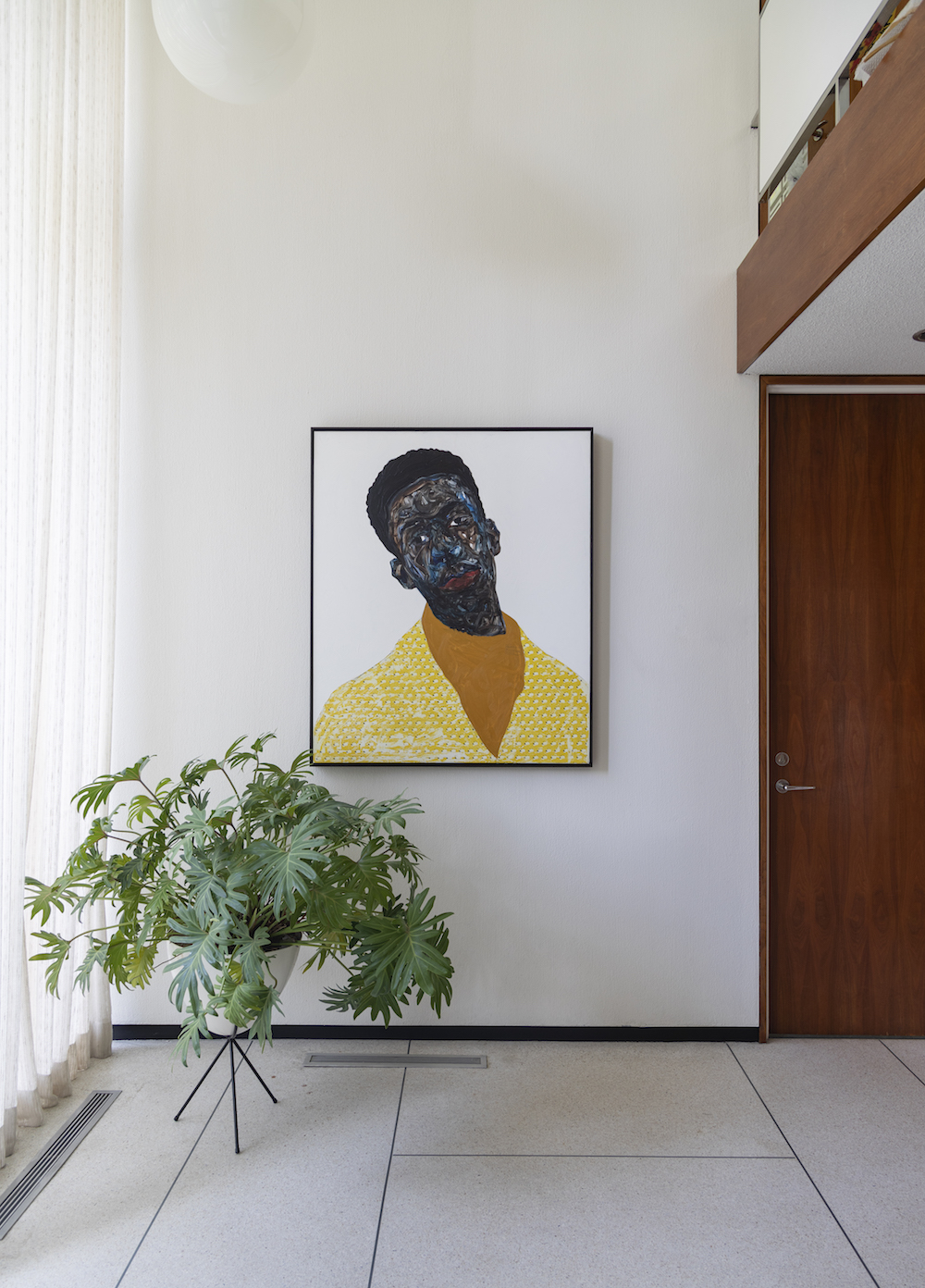
Amoako Boafo, “White Wool Jacket ,” 2020, photo by Clare Gatto, courtesy of Library Street Collective.


